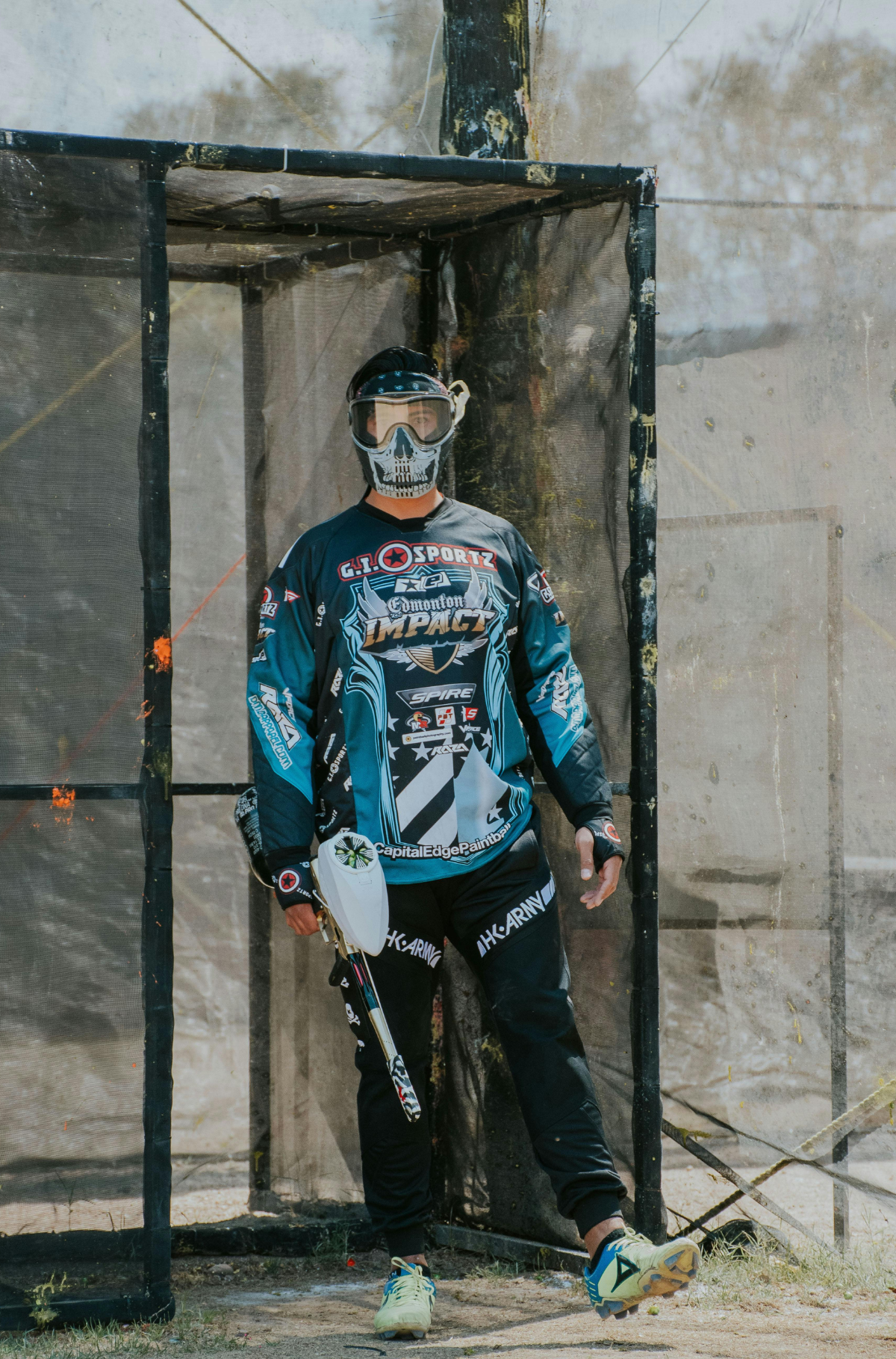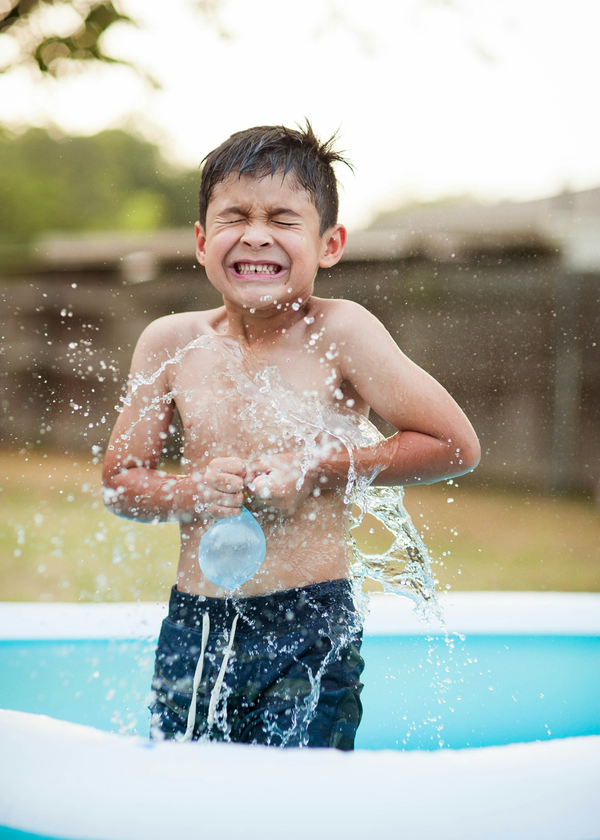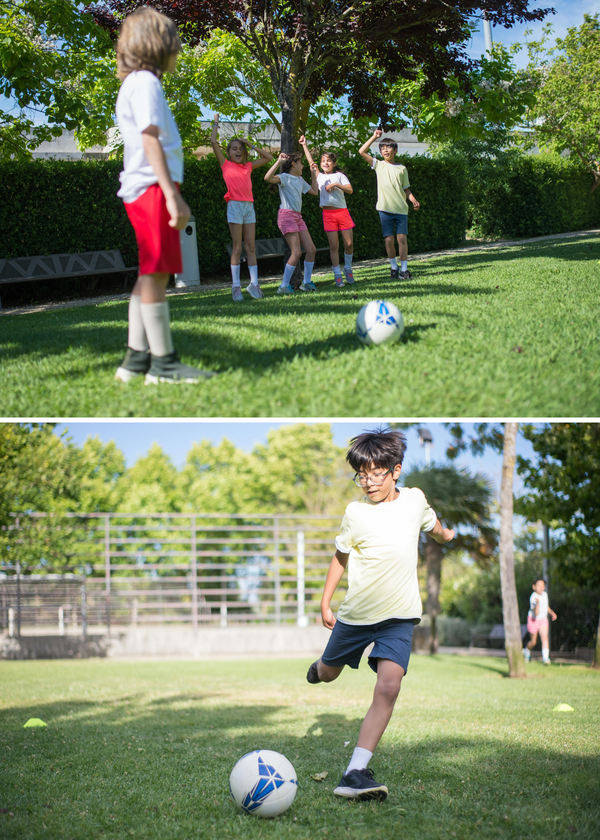The Basics of Paintball and GellyBall
When it comes to adrenaline-pumping shooting games, paintball has long been the go-to sport. It involves players using paintball guns to shoot paint-filled pellets at each other. The sport is known for its high energy and sometimes painful hits. On the other hand, GellyBall is a newer game that uses blasters to shoot soft gel balls. These gel beads are non-toxic and have a gel-like consistency, making them less painful upon impact.
Paintball games are typically played in an outdoor arena where players can hide behind various shapes and obstacles. Paintball markers, or guns, are powered by compressed air or CO2 and fire the paintball pellets with considerable force. This can lead to a sting or a bruise if you're hit, which is why players must wear protective gear, including masks and often additional protective clothing.
Equipment: Paintball Markers vs Gel Blasters
The most gel blasters are battery powered, making them lighter and often easier to handle than traditional paintball guns. Gel blasters shoot soft gel balls, which are essentially water beads that expand when soaked in water. These ammo pieces are low impact and break upon contact, meaning they don't leave a mess like regular paintballs.
Paintball markers, in contrast, are designed to fire paintballs hurt at a higher velocity. This means that the impact is more significant, and the potential for pain is higher. As a result, paintball players must wear protective gear to safeguard against injuries. The gear can be cumbersome but is essential for safety during play.
Gameplay Dynamics: Strategy and Pace
Paintball is known for its strategic gameplay, where one team tries to outmaneuver the other. It's a sport that can be played both indoors and outdoors, with games often lasting longer due to the strategic nature of the sport. Players might use sniper rifles or other specialized paintball guns to gain an advantage.
GellyBall, with its lower velocity ammo, tends to be more about speed and less about strategy. The games are usually shorter, and because the gel beads are not as painful, players might be more inclined to take risks and move around the field more freely. This can make GellyBall seem more fun and less intimidating, especially for younger players or those new to shooting games.
Safety and Comfort: Protective Gear and Impact
When it comes to safety, both sports require players to wear protective gear. However, because paintballs hurt more than gel blaster balls, paintball players need to wear more robust protective clothing. This includes a full-face mask, chest protectors, and sometimes padded clothing. The sting of a paintball hit is well-known, and the bruising can be significant.
GellyBall players also need to wear protective gear, but the requirements are generally less stringent due to the soft gel balls' lower impact. A simple pair of goggles can often suffice, and the risk of bruising is minimal. This makes GellyBall a more comfortable option for many, particularly for kids and those who worry about the pain associated with paintball.
The Evolution of Paintball Gun Technology
The paintball gun, a staple in the sport of paintball, has undergone significant evolution since its inception. Initially designed for marking trees and livestock, modern paintball guns are sophisticated pieces of equipment that cater to the avid fan of the sport. With advancements in air systems, firing mechanisms, and materials, today's paintball guns offer a more refined experience that mimics the precision and feel of real guns without the lethal consequences. This evolution has not only improved the gameplay but also enhanced the safety standards, allowing players to enjoy the adrenaline rush with peace of mind.
In contrast, GellyBall blasters, often considered as toy guns due to their gel like consistency projectiles, represent a newer and more accessible technology. These blasters are designed to be lightweight and easy to handle, making them a perfect fit for younger players or those new to shooting sports. The non-toxic, biodegradable ammo used in GellyBall blasters requires minimal cleanup, making them suitable for both indoor and outdoor environments. As the technology behind these blasters continues to improve, they are quickly becoming a popular alternative to traditional paintball guns.
Integrating Paintball and GellyBall into Social Events
Paintball has long been a popular activity for social gatherings, offering an exciting way to engage with other players in a competitive yet friendly environment. Whether it's a birthday party, corporate event, or just a weekend outing with friends, paintball provides an opportunity for people of all ages to strategize, exercise, and work as a team. The sport's social aspect is a significant draw, as it encourages communication and camaraderie among participants, creating lasting memories and often igniting a passion for the sport among newcomers.
GellyBall, on the other hand, is quickly gaining traction as a social activity due to its ease of play and lower impact on the skin, making it a more inclusive option for younger players and those hesitant about the potential pain associated with being shot by a paintball. The equipment's simplicity and the non-toxic nature of the ammo make GellyBall an ideal choice for indoor events, where space might be limited, and cleanup needs to be straightforward. As GellyBall continues to grow in popularity, it's becoming a go-to activity for families looking to introduce their children to the world of tactical sports in a safe and controlled environment.
Accessibility: Age Limit and Ease of Play
One of the key differences between paintball and GellyBall is the accessibility for various age groups. Paintball typically has a higher age limit due to the intensity and potential for injury. It's a sport that's often recommended for teens and adults who can handle the physical demands and understand the safety rules.
GellyBall, on the other hand, has a lower age limit, making it suitable for younger players. The equipment is easier to handle, and the gameplay is less intense, which means it can be a great way for kids to get introduced to the world of tactical shooting games without the worry of getting hurt.
Cost and Maintenance: Ammo and Equipment
Cost is another factor that distinguishes these two sports. Paintball equipment can be expensive, not only because of the guns themselves but also due to the cost of ammo and the need for compressed air or CO2 refills. Additionally, maintaining paintball guns requires regular cleaning to prevent paint from clogging the mechanisms.
GellyBall is often seen as a more cost-effective alternative. The ammo is cheaper, and since the blasters shoot water-based gel beads, there's no mess to clean up after a game. The maintenance of most gel blasters is also simpler, as they don't have the same complex firing mechanisms as paintball markers.
Environmental Considerations: Non-Toxic Ammo and Cleanup
Environmental impact is an important consideration for many players. Regular paintballs are typically oil-based and can leave a residue on the playing field. While there are biodegradable options, they can still take time to break down.
Gel blaster balls, in contrast, are made of a super-absorbent polymer that is non-toxic and biodegradable. They shatter on impact and eventually evaporate, leaving no mess behind. This makes GellyBall an environmentally friendly option for those concerned about their ecological footprint.
The Social Aspect: Playing with Friends and Family
Both paintball and GellyBall offer great opportunities to socialize and bond with friends and family. Paintballing can be a thrilling way to celebrate a special occasion or just have a fun day out. The teamwork and camaraderie developed during a paintball game can be very rewarding.
GellyBall, being more accessible to younger ages and less painful, can be a more inclusive activity. It's easier to get a diverse group of friends or family members together to play gel ball, as the lower impact and less intimidating equipment can appeal to a wider audience.
FAQs
Q: Can paintballs hurt more than GellyBall ammo?
A: Yes, paintballs are fired at a higher velocity and can cause more pain upon impact compared to the soft gel balls used in GellyBall.
Q: Is GellyBall suitable for younger children?
A: Yes, due to its lower impact and less stringent protective gear requirements, GellyBall is suitable for younger children and has a lower age limit than paintball.
Q: Do you need to clean up after playing GellyBall?
A: No, gel blaster balls are water-based and evaporate after breaking upon impact, leaving no mess behind, making cleanup unnecessary.
Summary
Paintball and GellyBall are both exciting shooting games that offer unique experiences. Paintball is more intense, with a higher velocity and potential for pain, requiring more protective gear and a higher age limit.
GellyBall is a softer, more accessible alternative, with lower impact, less protective gear needed, and suitable for a younger audience. Both sports have their own strategic elements and social benefits, but GellyBall is often seen as more family-friendly and less costly.








